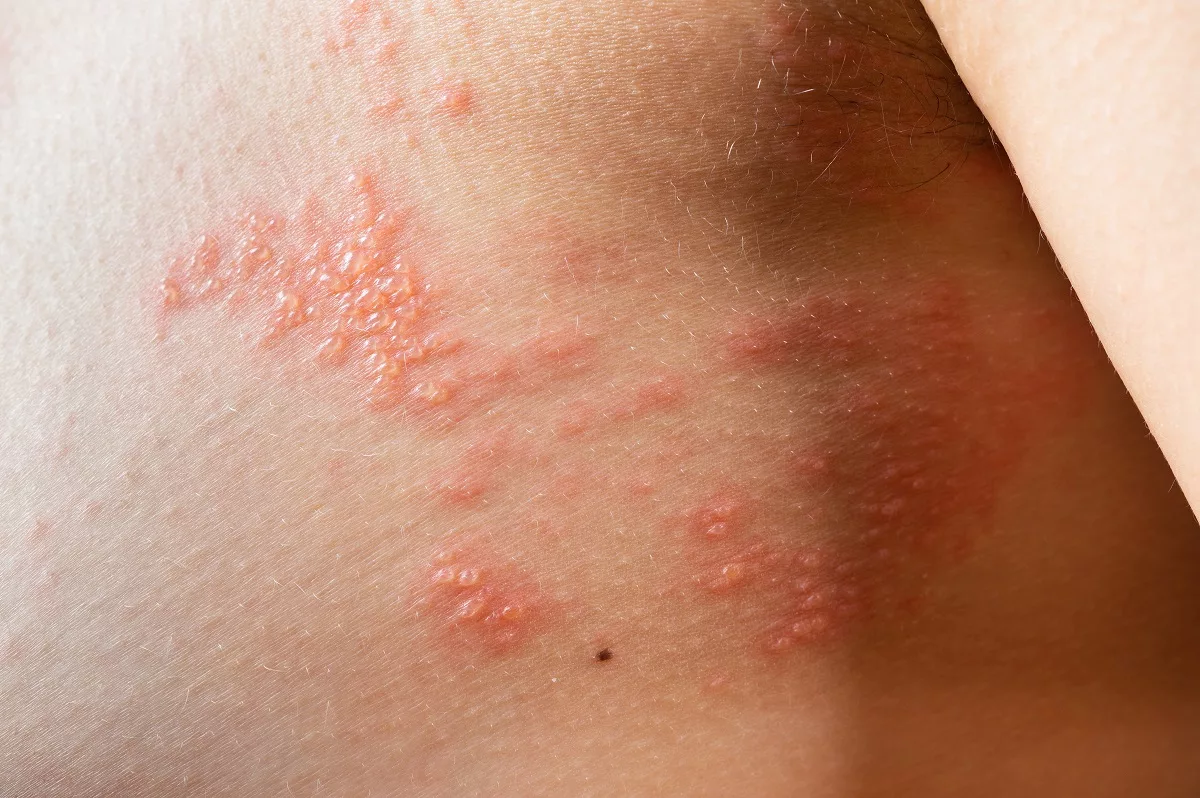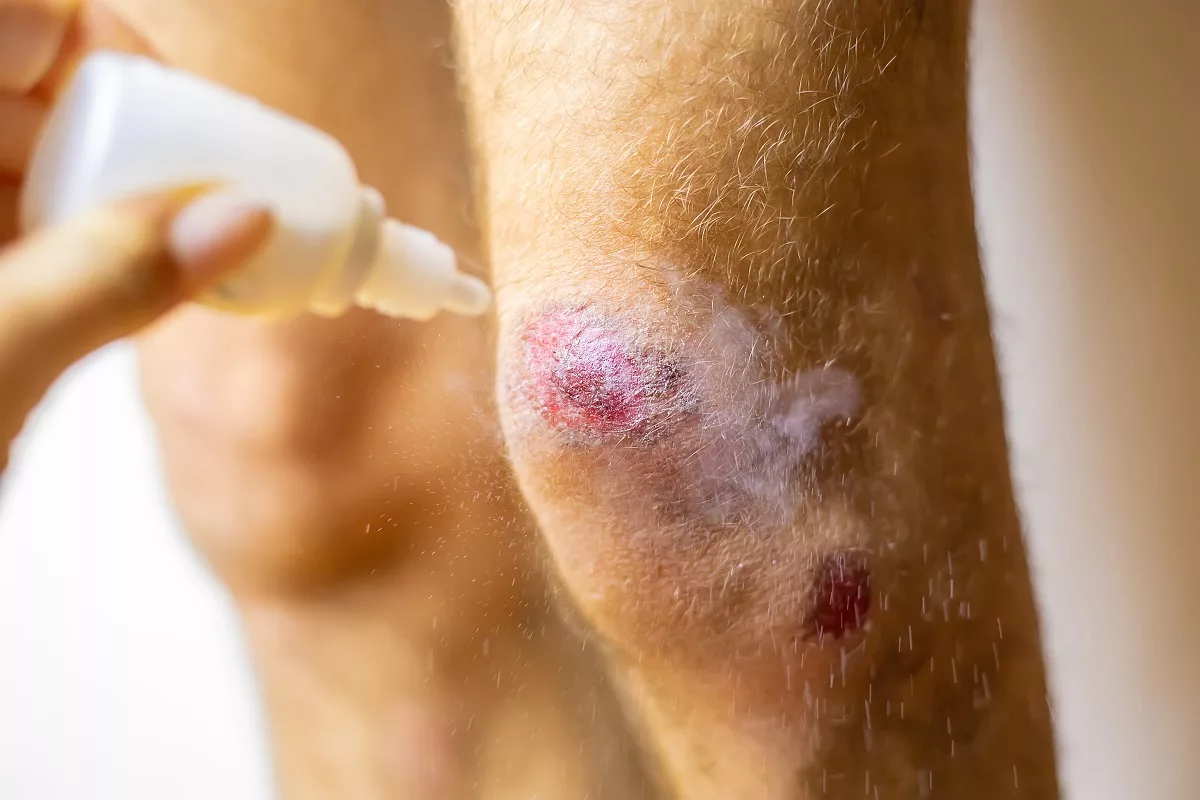Health conditions that negatively affect the skin are called skin diseases. The most common symptoms of these disorders are rashes and inflammation. While some occur due to genetic mutations, others may result from specific lifestyle factors. Physicians usually treat these conditions with medicines, creams, ointments, and lifestyle changes.
In general, the skin is a large organ that covers and protects the body. It has multiple functions, including:
- Holds liquids and prevents dehydration
- Helps feel sensations (such as pain or temperature)
- Prevents bacteria, viruses, and other germs from entering the body
- Regulates body temperature
- Synthesizes vitamin D
However, skin diseases include all that irritate, inflame, or clog the skin.
Skin Disease Types
While some conditions are minor and cause mild symptoms, others may cause severe symptoms enough to interfere with your daily activities. Check below for the most common skin diseases:
- Alopecia areata – This skin disorder causes you to lose hair in small patches.
- Psoriasis – It causes scaly skin that may swell or feel hot.
- Atopic dermatitis (also known as eczema) – This is a genetic disorder that causes dry, itchy skin that may lead to cracking, scaling, and swelling.
- Raynaud’s phenomenon – In such cases, you may experience numbness or skin color change due to reduced blood flow to the fingers, toes, or other parts of the body.
- Skin cancer – It occurs when skin cells begin to grow and multiply abnormally.
- Rosacea – It causes flushed and thick skin and pimples. Usually, it appears on the face.
- Vitiligo – This condition causes the skin to lose pigment.
- Acne – It often occurs due to blocked skin follicles that lead to oil, bacteria, or dead skin buildup in the pores.
However, there are multiple rare genetic skin conditions. It means you get the abnormal genes from biological parents. Check below some of them:
- Actinic prurigo (AP) – This disorder causes an itchy rash in response to sun exposure.
- Argyria – Skin color changes caused by silver buildup in the body.
- Chromhidrosis – It causes colored sweat.
- Epidermolysis bullosa – This is a connective disorder in which the skin becomes fragile and easily blisters or tears.
- Harlequin ichthyosis – This is a rare genetic disorder in which hard patches or plates on the skin appear at birth.
- Lamellar ichthyosis – This genetic skin disorder is characterized by thick and scaly skin.
- Necrobiosis lipoidica – In such cases, the condition causes rash on the lower legs, which may develop into sores (ulcers) over time.
Symptoms
The symptoms are very different among people with skin diseases. It depends on several factors, including the type and severity of the condition, age, overall health, and others. In some cases, you may develop a blister on the skin due to ill-fitting shoes. In general, skin disorders cause the following symptoms. For example:
- Open sores, lesions, or ulcers
- Peeling skin
- Rashes (sometimes, with pain or itchiness)
- Red, white, or pus-filled bumps
- Scaly or rough skin
- Abnormal pigmentation (discolored skin patches)
- Dry skin
If you experience any of the previous symptoms, do not hesitate to see a doctor.
Causes
While underlying health conditions may cause skin diseases, you may develop this disorder due to certain lifestyle factors. Check below the most common causes of skin diseases:
- Bacteria trapped in the skin pores or hair follicles
- Direct contact with environmental factors (including allergies, another person’s skin, and others)
- Certain medicines, such as those used to treat inflammatory bowel disease (IBD)
- Fungi or parasites that live on the skin
- Genetics
- Health conditions that negatively affect the thyroid gland, kidneys, or immune system
- Viruses
- Diabetes
- Sun
Risk Factors
Healthcare professionals have identified some factors that could elevate your risk of developing skin diseases. Check below some of them:
- Diabetes – Those who suffer from this chronic health condition may have problems with wound healing, especially on their feet.
- Inflammatory bowel disease (IBD) – This condition significantly increases the risk of eczema or vitiligo, as well as medicines that are used to treat IBD.
- Lupus – This is an autoimmune disorder that may cause inflammation and skin problems (including rashes, sores, scaly skin patches, and others)
Sometimes, people develop skin changes due to other factors. For example, pregnancy, stress, hormonal imbalance, and others.
What Are The Long-term Effects of Skin Diseases?
Those who ignore the symptoms and do not get treatment may experience some complications. Check below some examples:
- Frequent infections
- Hyperpigmentation and scarring
- Systemic complications (such as malnutrition, dental problems, joint mobility issues, and others)
- Skin cancer
- Mental health problems (such as anxiety, depression, low self-esteem, and others)
- Insomnia (sleep disturbances)
- Social isolation
How to Prevent Skin Diseases?
There are some skin disorders that cannot be prevented, including autoimmune and genetic disorders. However, you can take some steps to reduce the risk of contagious or infectious skin conditions. Check below some examples:
- Do not share your utensils, cosmetics, or other personal items
- Drink plenty of water and eat a nutritious diet
- Limit or avoid contact with irritants or harsh chemicals
- Regularly use sun protection, especially when outdoors. It helps prevent sunburns and other sun damage.
- Regularly wash your hands with warm water and soap
- Get enough sleep
- Disinfect objects you use in public spaces (including gym equipment)
Diagnosis
Usually, doctors suspect a skin disease during a physical examination. When it is not clear, they can perform some tests to confirm the condition and rule out others that cause similar symptoms. Examples include:
- Culture – This test involves taking a sample of affected skin to test for fungus, bacteria, or viruses.
- Skin patch test – During this test, physicians will apply small amounts of substances to test for allergic reactions.
- Biopsy – This test involves the removal of a small sample of the affected skin for testing under a microscope.
- Black light examination (also known as Wood’s light test) – It involves ultraviolet (UV) light to examine the skin’s pigment.
- Diascopy – This test involves a microscope that is slid against a skin patch to determine skin color changes.
- Dermoscopy – During this procedure, doctors will use a dermatoscope (a hand-held device) to examine skin lesions.
- Tzanck test – It involves taking a small sample of fluid from a blister to check for herpes simplex or zoster.
Treatment
Commonly, people with skin diseases are referred to dermatologists. They often prescribe different treatments because it depends on the type and severity of the condition, your age, existing health conditions (such as diabetes), and your preferences. Check below some treatments usually recommended by doctors for people with skin diseases:
- Antibiotics
- Antihistamines
- Laser skin resurfacing
- Moisturizers
- Topical medicines such as creams, gels, or ointments
- Oral medicines
- Steroid pills, creams, or injections
- Surgery
In most cases, doctors recommend lifestyle changes along with previous treatments. For example:
- Limit or avoid alcoholic beverages
- Limit certain foods (including sugar and dairy)
- Manage stress and chronic health conditions
- Practice good hygiene
Frequently Asked Questions
Do skin diseases usually return after treatment?
There are a lot of skin conditions that are chronic (long-lasting), and treatments only lessen the symptoms. In such cases, people often need to continue taking medicines for the rest of their lives. Sometimes, people develop skin diseases that go away without treatment.
What are the most common skin diseases?
These include:
- Acne
- Eczema (atopic dermatitis)
- Psoriasis
- Skin cancer (including basal cell carcinoma, squamous cell carcinoma, and melanoma)
- Fungal infections
- Cold sores (herpes simplex virus)
- Hives
- Alopecia areata
- Rosacea
- Contact dermatitis
For more details, discuss it with your physician.
What skin disease cannot be cured?
In general, multiple skin diseases are chronic and cannot be cured. These include vitiligo, shingles, rosacea, psoriasis, cold sores, and others. Ask your healthcare provider if you have any other questions.




